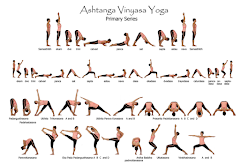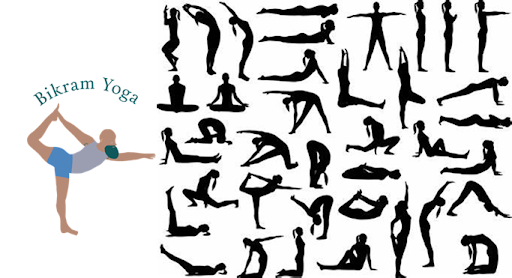
Yoga is receiving a great deal of attention recently. Some famous faces are real yoga converts and have made it a part of their daily routine.
Kate Hudson, Justin Timberlake, Lady Gaga, Madonna, Robert Downey Jr, Beyonce, Tom Hanks, and many more. We never knew these celebs were such die-hard yogis.
Some arthritis patients also turn to yoga. Having arthritis does not prevent individuals from trying these alternatives to traditional exercise. However, for many people, yoga may bring to mind the poses requiring considerable strength and balance.
What is yoga?
Yoga is from a Sanskrit word meaning “to yoke” or “to unite.” It originated in India. Yoga focuses on unifying the mind, body, and spirit, and fostering a greater feeling of connection between the individual and his/her surroundings.
Yoga has spiritual roots, with the primary goal of helping individuals to realize true happiness, freedom, or enlightenment. Beyond this, however, yoga has several secondary purposes, such as improving physical health and enhancing mental well-being and emotional balance.
Yoga included both seated and standing poses, as well as breathing exercises, with a focus on relaxation and meditation. Experts found that the gentle style helped ease pain and increase mobility for people with arthritis.
There are four types of yoga for those with arthritis. Any of the categories may be a good fit for everyone. These include:
● Iyengar
Iyengar yoga gives importance to the alignment of the body and precise movements. The utilization of props such as ropes or blocks in poses that are held for long periods and often modified is designed to cultivate strength, flexibility, stability, and awareness, and can be therapeutic for specific conditions
Bikram yoga is hot yoga, but hotter— the sequence of postures and breathing exercises must be performed within 90 minutes in a 104-degree heated room to allow the body to stretch, detoxify, relieve stress, tone, and heal chronic pain such as arthritis, joint aches, knee injuries, back problems, and more. Bikram yoga is not advisable for patients with heart disease.

● Viniyoga
Viniyoga is another type of yoga therapy. It focuses on breathing. Viniyoga is adaptable. Each movement coordinates with the breath, creating inner awareness. A person may breathe in and out, and hold postures for extended periods of time, which make it an excellent choice, especially for beginners in yoga practices.

This style of yoga incorporates aerobic movements like push-ups and lunges. It is called "power yoga." Ashtanga is suited for a person with mild arthritis and in good shape.
Ashtanga also is known as the “yoga of techniques,” for the reason that employs a multitude of techniques, such as postures, breathing, concentration, and meditation exercises.
Yoga suggests simple stretches or poses. These poses of yoga for arthritis must be practiced daily. Massaging the joints with oil strengthens the bones and eases the swelling and pain in the joints.
The easiest and most effective stretches for arthritic pain are:
- Triceps stretch
The triceps stretch improves flexibility and range of motion. After an upper body workout routine, that includes pushing or pressing movements, it is essential to stretch the triceps to prevent soreness and tightening of the muscles.
- Eagle Pose
Eagle Pose, named after the mythological Hindu “king of the birds,” known as Garuda or Eagle. Eagle Pose is a standing balance pose using the breath and the gaze. This posture will help calm the mind and release distractions, allowing for quiet poise and stability in the position. Eagle Pose requires strength, flexibility, and endurance of the body.
- Knee To Chest Pose
The Knee To Chest Pose is rarely referred to by its Sanskrit name — Apanasana. This pose is suitable for all. It is a great hip opener. Practicing knee-to-chest poses is a gentle way to restore proper flow and function to the organs of the torso. It releases excess pressure from the digestive organs, and low back, as well as the mind. It also eases anxiety.
Practice this pose in the morning and before going to bed. It is a simple way to encourage the body, mind, and spirit to remain pure and balanced throughout the day! It helps in curing gastric problems and is known to relieve knee pain.

- Pigeon Pose
Pigeon Pose or Eka Pada Rajakapotasana gives the body a fantastic stretch. It is a useful hip opener. It is an intermediate pose and works on all the joint areas in the body. It strengthens the groin area. Pigeon pose is helpful in finding relief from sciatica and back pain as well as releasing built-up stress, trauma, fear, and anxiety.
For beginners, it is essential to find an instructor who has experience working with people with chronic conditions like arthritis. A well-trained and experienced yoga instructor will be able to offer more individual guidance to adapt the poses to a person's needs and limitations.
Another thing is, to be sure to consult a doctor. It is still best to tell the doctor about the condition a person may have before starting a new exercise program.
Arthritis can take over life, making the simplest of tasks seem like a battle. Practicing yoga therapy can get a person with arthritis back into their life. Daily yoga practice generates many benefits. Pure, gentle movements that gradually build strength, balance, and flexibility – all elements are beneficial especially to older adults.
Try and practice yoga every day—it will give the joints a new lease on life!




No comments:
Post a Comment